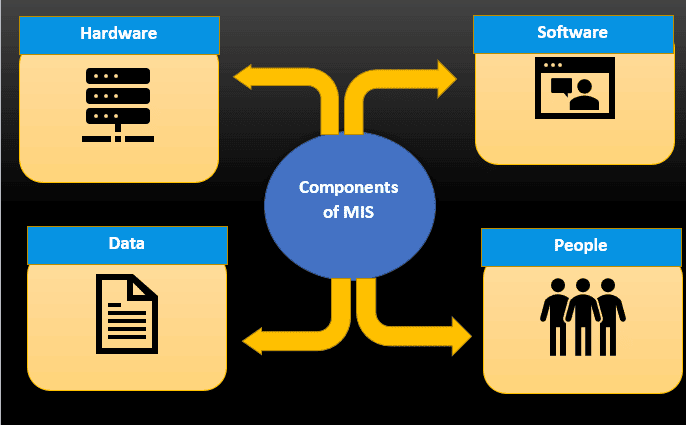1. Introduction
Management Information System (MIS) is a set of information technology tools and techniques used to gather, store, and analyze information aiming to support the decision-making process.
Nowadays, MIS is an essential component, especially for modern business operations, that provides managers with timely and accurate information to make informed decisions.
In this tutorial, we’ll explore the purpose and components of the MIS, as well as the benefits it provides to organizations.
2. Purpose of Management Information System
The main purpose of MIS is to provide managers with the necessary information to make decisions.
MIS is responsible for gathering data from several sources, such as internal and external sources. In addition, it converts the data into useful information. This information is then utilized to monitor business operations, identify trends, and predict future outcomes.
The key functions of MIS may include data collection, where we can gather data from multiple sources, including internal and external sources. Internal sources, for example, accounting, finance, and human resources. On the other hand, external sources include market research reports and customer feedback. In addition, we can collect data using various techniques, including online surveys, face-to-face interviews, and focused groups.
It also allows data preprocessing. Once data is collected, it is processed using various tools and techniques. The processing step includes sorting, classifying, and analyzing data to produce meaningful information.
After that, this information is stored in a database for future use.
3. Components of Management Information System
To enable decision-making, the MIS consists of four primary components that equip managers with essential information. These components are hardware, software, data, and people.
Hardware refers to the physical components of the MIS, such as computers, servers, and other devices that store and process data.
The software includes the programs used to process and analyze data. This includes various applications like databases, spreadsheets, and business intelligence tools.
Data serves as the fundamental resource for the MIS. It is collected from various sources and processed using advanced techniques to generate significant insights.
People are a crucial component of MIS. They are responsible for collecting, processing, and analyzing data. People who work in MIS have different abilities, such as looking at data, organizing databases, and keeping information safe.
The following figure shows the components of MIS:

4. Pros and Cons of MIS
While MIS provides several benefits to organizations, such as improved decision-making, increased efficiency, and reduced costs, its implementation can pose challenges for organizations due to various factors.
The table shown below addresses the pros and cons of MIS:
Pros
Cons
MIS helps managers make better decisions by providing real-time and accurate information for trend identification and predicting future outcomes
MIS has technical challenges, including selecting the appropriate hardware and software, integrating MIS with existing systems, and ensuring data security
MIS automates many manual processes, reducing the time and effort required to collect and process data. This automation improves efficiency and reduces costs
However, MIS professionals need specialized skills, and the lack of proper training for employees is a challenge that organizations must address
MIS reduces costs by eliminating manual processes and improving efficiency. This reduces the time and effort required to complete tasks, which translates into lower costs for the organization
To successfully implement MIS, organizations must overcome employee resistance to change problems by communicating the benefits of the new system and providing adequate training
6. Conclusion
In this article, we discussed Management Information Systems as a crucial component of modern business operations, providing managers with timely and accurate information to make informed decisions.
Through data collection from various sources, processing it to produce meaningful insights, and storing it for future use, MIS offers numerous benefits to organizations, including improved decision-making, increased efficiency, and reduced costs.